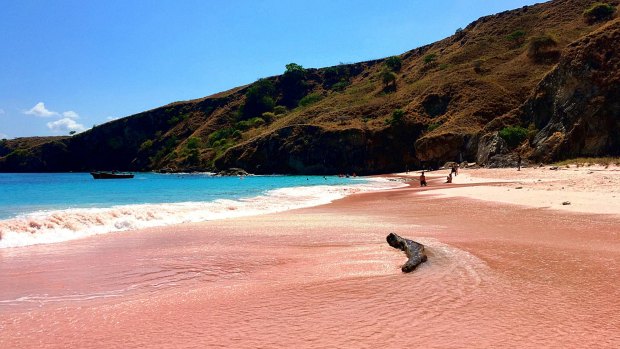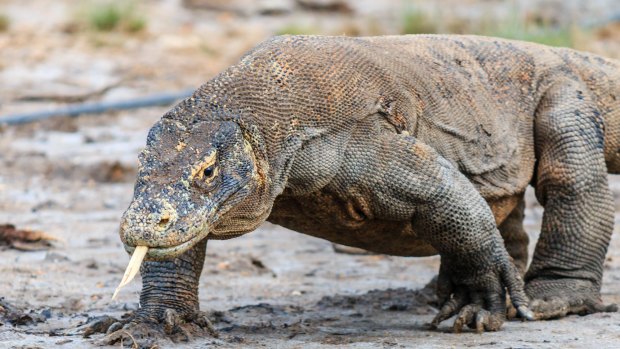This was published 4 years ago
Komodo Island $1000 entry fee plan: Will travel in the future only be for the super-rich?
By Chris Leadbeater

A $US1000 entry fee to Komodo Island has been flagged. It currently costs just $US15.Credit: iStock
The problem of overtourism is very much an issue of our times – enormous numbers of cruise passengers and day-trippers stomping through the historic streets of Dubrovnik and Venice; hikers turning the Inca Trail into a deep-trodden groove in Andean soil all the way to Machu Picchu; mountaineers even queuing single file to enjoy their moment at the summit of Everest.
In an era when it is possible to get to just about anywhere on this planet – and at short notice, should the whim take you – the worry that too many people are too present in too many places that are unable to cope with the pressure of mass footfall is a real and pertinent one. How we respond to it will help to dictate the future of our world – and the way we travel within it – for decades to come.
So the recent suggestion that Komodo – the Indonesian island renowned as the home of the fierce and famous Komodo Dragon – might be closed to visitors in order to protect its most precious residents should be considered a good thing. Shouldn't it?

The reduction in tourists is supposedly to protect the resident Komodo dragons, but what does it say about the future of travel?Credit: iStock
The announcement came back in July. This remarkable outcrop – which, along with its neighbours Rinca and Padar, makes up Komodo National Park – was to be shut to the travelling public for a year from the start of January (2020). This was a necessary and important step, Viktor Laiskodat – the governor of the surrounding East Nusa Tenggara province – said. It would allow the habitat to recover, and give these feisty, venomous, lizards 12 months of space to mate and hatch babies in undisturbed peace. It was an ecological intervention that would give a rare space a much-needed chance to breathe.
Few would disagree with such a stance. Unesco, which has included Komodo National Park on its list of World Heritage Sites since 1991, describes it as a group of "volcanic islands... inhabited by a population of around 5,700 giant lizards, whose appearance and aggressive behaviour have led to them being called Komodo Dragons" – adding that "they exist nowhere else in the world and are of great interest to scientists studying the theory of evolution". The park's heralding in 2011 as one of the "New7Wonders of Nature" – alongside the likes of the Amazon Rainforest and Table Mountain, was (although the poll was tinged with claims of corruption and vote-rigging) an indication of the esteem within which it is held internationally.
And it is not as if fencing off a popular but fragile location is an unprecedented move. Thailand has closed Maya Bay on the island of Phi Phi Leh – the gorgeous curve of sand that became a bucket-list staple after appearing in 2000 Leonardo DiCaprio movie The Beach – until 2021; Boracay, in the Philippines, spent a similar six months behind red tape from April to October last year.
However, this week's news changes all of this. Yesterday, it was revealed that, in spite of July's talk of a year-long shutdown, Komodo will stay open. Tourist numbers will still be controlled – but not via the straight-forward method of ensuring that people stay away. Instead, the price will be hiked to the point of being prohibitive – from the $US10 ($15) admission charge which visitors currently pay to set foot on the island to a rather weightier $US1000 ($1500) annual "membership fee" that would allow repeat visits over the course of a year.
Reports in the Indonesian media also suggest that, while the precise details are still being worked out, the membership scheme could be a two-tier affair, with only "premium" members allowed access to Komodo island – with non-premium guests having to make do with "lesser" areas of the national park. "They (non-premium tourists) will be directed to visit other islands, such as Rinca," Luhut Pandjaitan, Indonesia's Coordinating Maritime Affairs Minister, told the state news agency Antara.
A ground-breaking plan with obvious environmental positives, or a not-so-elaborate money-making wheeze? You might, if you analyse it for a minute, see it as the latter disguised as the former – a clever proposal that makes the right noises about protecting the Komodo Dragons, while ensuring that none of the revenue they engender is lost. Indeed, at such a price, the scheme would surely boost government income from the national park while vastly reducing the number of people who land on its jetty.
There is something about the idea which feels grubby. While there has certainly been a surge in foot-traffic on Komodo – the figures have leapt four-fold in a decade, with 176,000 people visiting in 2018 where the relevant statistic was only 44,000 in 2008 – charging a year-long "membership fee" seems deeply cynical. The national park does not sit in an easy-to-reach location. The islands lie wedged between the much larger outcrops of West Nusa Tenggara and East Nusa Tenggara – far out in the fragmented portion of Indonesia which stretches out along the eastern edge of the Indian Ocean.
The national park sits 1400 km east of the Indonesian capital Jakarta – and a good 480 km from Bali, the nearest tourism hotspot. It is not, by definition, a dot on the map that attracts repeat tourism. It is not Alton Towers, it is not Madame Tussauds. No-one will buy "membership" on the basis that they can pop in for an afternoon every few months. Nobody is likely to turn to their other half and say "what are we doing this weekend, darling? Shall we pop over to Komodo for an hour? We haven't been since February?" This is not a membership fee so much as an astonishing admission charge.
So what – you might well say? Surely this is a case of a praise-worthy conservational end justifying the cash-grabbing means? And you might be right. The plan will certainly be of benefit to the Komodo Dragons – whatever the motivations behind it.
But it also leads to an uncomfortable vision of the future – a planet where every key site and fascinating corner is accessible, but only to the wealthy, and only at a considerable price. For if Indonesia can charge $US1000 for a visit to Komodo National Park, what is to stop Peru asking $1200 for a morning at Machu Picchu, or Ecuador demanding $3000 for a couple of days touring the Galapagos islands?
Fair enough, you might also say – if you really want to see these places in a century of climate change and flight-shame, then that is the cost, and you are free to choose whether or not to pay it. But the idea would quickly catch on, far beyond delicate environmental sites and remote wonders. Time on the beach in the south of France? Membership fee. Afternoon admiring the archaeological joys of Rome? Subscription charge. Stroll along the edge of the Grand Canyon? Premium guests only. In a world of colossal inequalities, travel is one of the great levellers. Do we really want it to become yet another plaything of the super-rich – while everybody else picks through the scraps?
The Telegraph, London
Sign up for the Traveller Deals newsletter
Get exclusive travel deals delivered straight to your inbox. Sign up now.